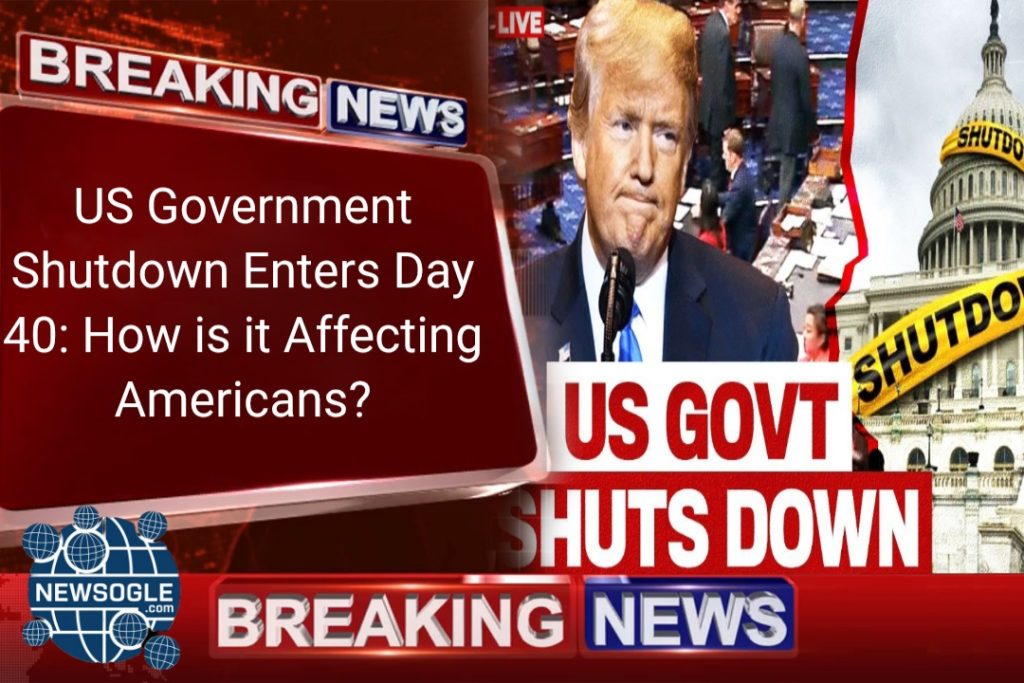
WASHINGTON, D.C. – As the political impasse in Washington stretches into an unprecedented length, the partial US government shutdown has officially entered its 40th day, shattering records and deepening the crisis for millions of American families and the national economy. With no immediate end in sight, the effects have shifted from mere inconvenience to severe financial distress, impacting critical sectors from food safety to aviation and housing.
The Immediate Financial Strain: Missed Paychecks
The most visible consequence of the prolonged shutdown is the failure to pay federal workers. Approximately 800,000 federal employees—roughly 400,000 furloughed (sent home without pay) and 400,000 essential workers (working without pay)—have now missed two full paychecks.
- Financial Distress: For many low to middle-income families, missing a second paycheck has triggered a cascading financial crisis. Reports indicate a significant spike in federal workers applying for unemployment benefits, relying on food banks, and seeking emergency loans to cover mortgages, rent, and utility bills.
- Contractors Hit Hardest: Federal contract workers, who are not guaranteed back pay once the government reopens, are facing even greater uncertainty. This includes janitorial staff, cafeteria workers, security guards, and IT specialists whose livelihoods are now dependent on contracts that have been indefinitely paused.
Erosion of Essential Services and Safety
While “essential” functions like national security and border patrol continue, the prolonged absence of non-essential personnel is eroding critical government services and safety nets.
1. Transportation and Aviation Safety
The shutdown has created dangerous operational stress within the air traffic control system and airport security:
- TSA Stress: Transportation Security Administration (TSA) agents, who are deemed essential and continue working without pay, have reported high rates of sick leave. This has led to long lines and occasional closures of security checkpoints at major airports, raising concerns about aviation safety and efficiency.
- Air Traffic Control: The Federal Aviation Administration (FAA) has also seen a slowdown in inspections and training, while air traffic controllers work under immense financial and mental pressure, sparking concerns from aviation unions about potential safety compromises.
2. Food and Environmental Protection
Key federal oversight bodies have been severely hampered, impacting consumer health and environmental enforcement:
- Food Inspections: The Food and Drug Administration (FDA) has suspended most routine food safety inspections. While high-risk food checks continue, a large portion of the food supply chain is currently operating without the usual federal oversight, increasing the potential risk of outbreaks.
- Environmental Oversight: The Environmental Protection Agency (EPA) has been largely non-operational, pausing crucial pollution enforcement, toxic site cleanups, and processing environmental permits.
Economic and Long-Term Damage
Beyond the immediate human impact, economists warn that the shutdown is beginning to inflict significant damage on the broader US economy.
- GDP Impact: Estimates suggest that the US economy is losing billions of dollars each week the shutdown continues. This is due to the lost productivity of federal workers, reduced spending power in communities reliant on federal wages, and the chilling effect on business investment due to uncertainty.
- Data Freeze: Critical government economic data—such as key reports from the Census Bureau and the Bureau of Economic Analysis (BEA)—are not being compiled or released. This lack of reliable, up-to-date data makes it difficult for businesses, investors, and the Federal Reserve to make informed decisions, adding another layer of economic risk.
- Small Business Loans: The Small Business Administration (SBA) has halted the processing of new loan applications. This suspension is choking off access to capital for small businesses, preventing expansion and job creation across the country.
Social Safety Nets Under Threat
The shutdown is placing pressure on programs designed to protect the most vulnerable citizens:
- Housing Assistance: Housing and Urban Development (HUD) funding for low-income housing and rental assistance is at risk. While some contracts were temporarily funded, many state and local housing agencies face uncertainty about federal aid for thousands of tenants.
- National Parks: Although many national parks have remained open, they are operating with minimal staffing. This has led to sanitation problems, accumulated trash, and environmental damage in some protected areas, requiring local communities and volunteers to step in.
The 40-day mark serves as a grim milestone, transforming a political dispute into a national crisis that touches every aspect of American life, from individual finances and public safety to the stability of the national economy.

Aleda Kawis is the Professional Journalist and serving in the field since 2012. She keeps extensive experience as investigating journalist and media influencer.




